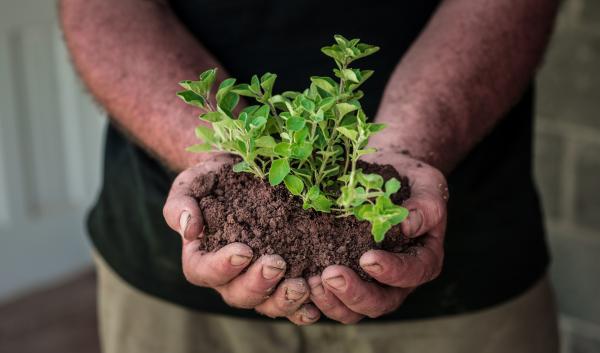As sea levels rise along the coasts, saltwater can move onto the land. Known as saltwater intrusion, this occurs when storm surges or high tides overtop areas low in elevation. It also occurs when saltwater infiltrates freshwater aquifers and raises the groundwater table below the soil surface.
In the Northeast, the average rate of sea level rise is 3 mm per year, and faster in the mid-Atlantic where land is also sinking. This rate is also speeding up, causing the problem of saltwater intrusion to get worse over time. Researchers are showing that large storms are becoming more frequent, high tides are reaching farther inland, and saltwater is spreading through fresh groundwater faster than it has in past decades. Droughts can make the problem worse by decreasing the fresh water available to flush salts out of soil and groundwater.
Research brief Watch webinarWhat issues do farmers face?
Because of its low elevation, land along much of the Northeast seaboard is at risk from saltwater intrusion. In this region, many acres of farmland are lost every year because they are becoming too wet and salty to grow crops. Salt tolerant marsh plants that border farm fields are moving inland and onto the former fields in a process called “marsh migration.” Though farmers currently view marsh migration as a problem, it may also provide opportunities. Farmers may be able to develop wetland conservation easements on this land. In this case, planting certain native plants can help prevent or slow the migration of undesirable or invasive species such as Phragmites australis. Native plants can provide other valuable ecosystem services too.
Saltwater can also impact water quality by “unlocking” nutrients from fertilizers in farm fields. This is due to the unique chemistry of saltwater and how it interacts with soil. Once these nutrients become mobile, they can travel through networks of agricultural ditches into larger coastal water bodies such as tidal creeks and marshes. There, the excess nutrients can cause excess algae growth. When the algae die, they are broken down by bacteria. This process can use up all the oxygen in the water. Depleted oxygen levels can result in fish kills, loss of animal habitat, and other harmful effects on coastal ecosystems and wildlife.

Figure 1: An illustration of saltwater intrusion. Image adapted from ian.umces.edu (University of Maryland Center for Environmental Science)
How can farmers adapt?
There are a few strategies that can improve soil health and lessen the effects of saltwater intrusion in the short term. However, these are not long-term solutions. Farmers can remove excess salt from the soils through irrigation. Natural rainfall events will also help with this process. Farmers can also add gypsum to decrease excess salt in the soil and use compost and manure products with low salt levels. Cover crops, which help salt to leach down through the soil by increasing the flow of water, can also be grown on affected fields for one season. Most of the cash crops currently grown in the Northeast are not salt or flood tolerant. However, farmers may be able to continue generating income on land impacted by saltwater intrusion by planting different crops. Researchers are currently testing out varieties of barley, sorghum, salt tolerant soy, switchgrass, and other plants to determine how well they can withstand salty soils and periodic flooding. They hope to identify crops that can be planted and harvested with equipment that farmers already have.
Another tactic for adapting to saltwater intrusion is to add in conservation practices on or next to salt impacted fields. These practices can provide wildlife habitat, protect and improve water quality, and may become income sources too. Native warm season grasses such as switchgrass, coastal panicgrass, eastern gamagrass, and salt meadow and prairie cordgrasses grow well on saline sites. They could be grown as a value-added biomass crop for mulch, animal/poultry house bedding, or biofuel. Eventually, fields used to grow even salt tolerant crops will no longer be farmable because the soil will become too wet. When this happens, the land can be turned into marsh habitat and placed in a conservation easement program. Salt marshes provide billions of dollars of recreational value to coastal states but rising seas are drowning out many acres of coastal marshes every year. Therefore, it can be cost effective for states to provide incentives for farmers to create salt marshes on their property from salt-affected farmland.

Soybean field next to brackish water ditch with no conservation buffer. Photo by Jarrod Miller, University of Delaware.
What research needs to be done?
In order to help farmers and landowners adapt to saltwater intrusion, we need to better understand the problem. By tracking salinity changes over time in groundwater wells and surface water, researchers can develop a better picture of which areas are most vulnerable. Improved mapping of where this is occurring is also important. Mapping will highlight areas where it will be the most cost effective to take certain adaptation measures, such as planting salt tolerant crops. Researchers also need to better understand the economic impacts of potential crop losses and of adaptation strategies. Finally, scientists must also refine and update water quality models to include saltwater intrusion and the impact of “unlocked” nutrients.
Recommended resources
Explore the links below for additional information.
- Find your local Conservation District
- USDA-NRCS Cape May Plant Materials Center
- ‘Our Changing Chesapeake’ Story Map
- Strategies to Mitigate the Impacts of Sea Level Rise and Salt Water Intrusion on Agricultural Lands
- Overview of Dr. Kate Tully’s Research
- Overview of Dr. Keryn Gedan’s Research
This content was developed by University of Maryland, Department of Plant Science and Landscape Architecture and University of Maryland Sea Grant Extension. Additions/revisions provided by USDA-NRCS Cape May Plant Materials Center



